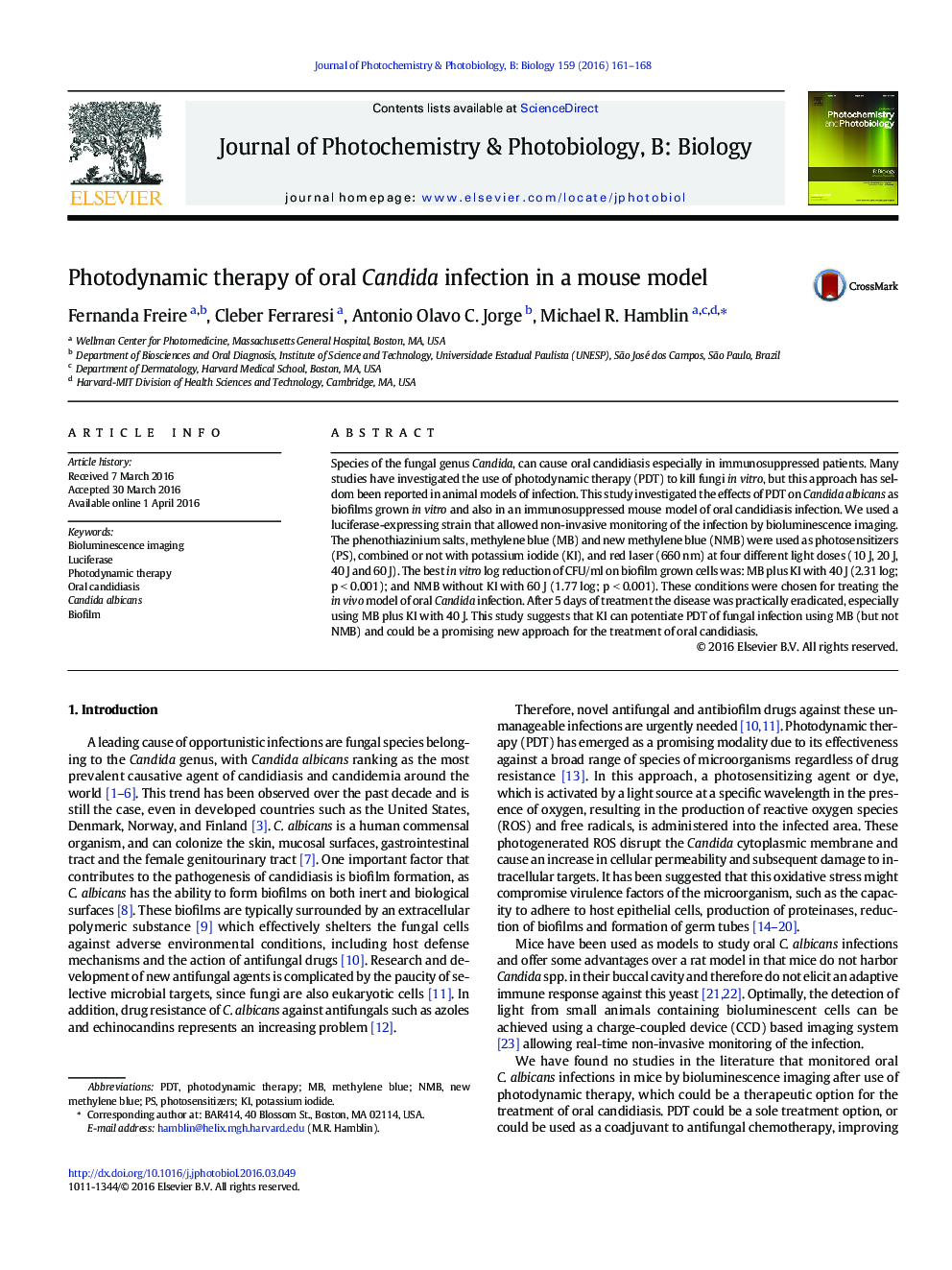| Article ID | Journal | Published Year | Pages | File Type |
|---|---|---|---|---|
| 29487 | Journal of Photochemistry and Photobiology B: Biology | 2016 | 8 Pages |
•Methylene blue PDT of Candida biofilms is potentiated by non-toxic potassium iodide.•New methylene blue PDT is not potentiated by potassium iodide.•PDT of oral candidiasis in a mouse model using real time bioluminescence imaging•Total loss of bioluminescence on 5th day of treatment with new methylene blue PDT
Species of the fungal genus Candida, can cause oral candidiasis especially in immunosuppressed patients. Many studies have investigated the use of photodynamic therapy (PDT) to kill fungi in vitro, but this approach has seldom been reported in animal models of infection. This study investigated the effects of PDT on Candida albicans as biofilms grown in vitro and also in an immunosuppressed mouse model of oral candidiasis infection. We used a luciferase-expressing strain that allowed non-invasive monitoring of the infection by bioluminescence imaging. The phenothiazinium salts, methylene blue (MB) and new methylene blue (NMB) were used as photosensitizers (PS), combined or not with potassium iodide (KI), and red laser (660 nm) at four different light doses (10 J, 20 J, 40 J and 60 J). The best in vitro log reduction of CFU/ml on biofilm grown cells was: MB plus KI with 40 J (2.31 log; p < 0.001); and NMB without KI with 60 J (1.77 log; p < 0.001). These conditions were chosen for treating the in vivo model of oral Candida infection. After 5 days of treatment the disease was practically eradicated, especially using MB plus KI with 40 J. This study suggests that KI can potentiate PDT of fungal infection using MB (but not NMB) and could be a promising new approach for the treatment of oral candidiasis.
Graphical AbstractFigure optionsDownload full-size imageDownload as PowerPoint slide
